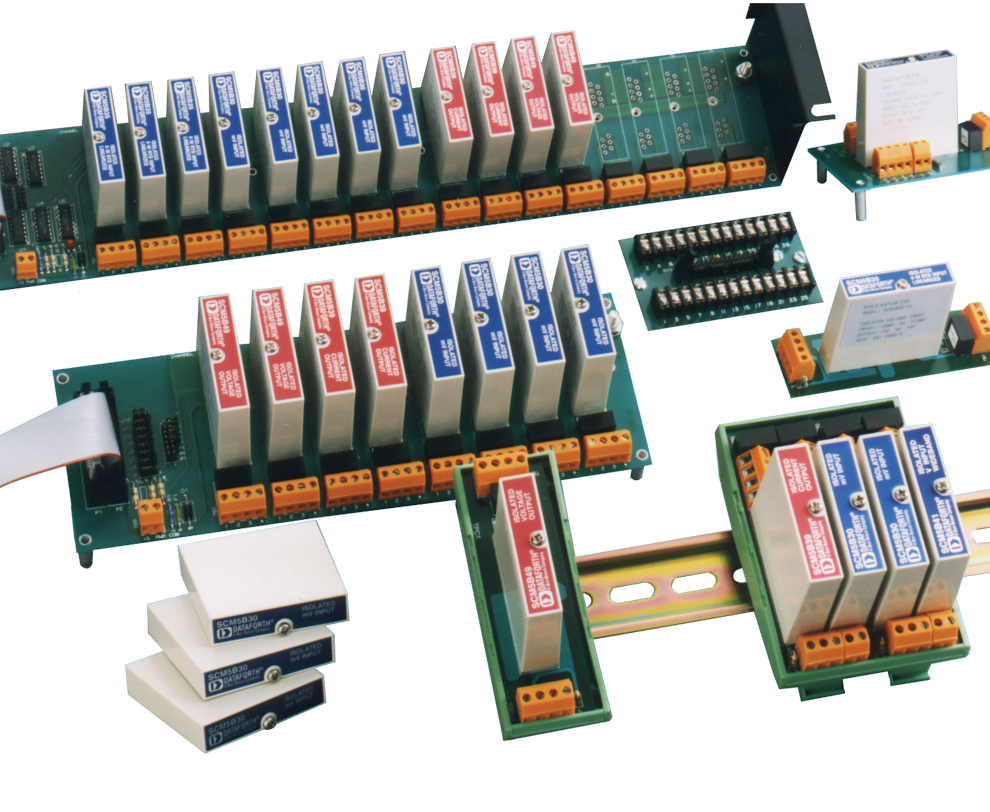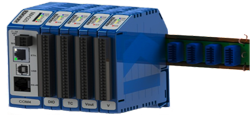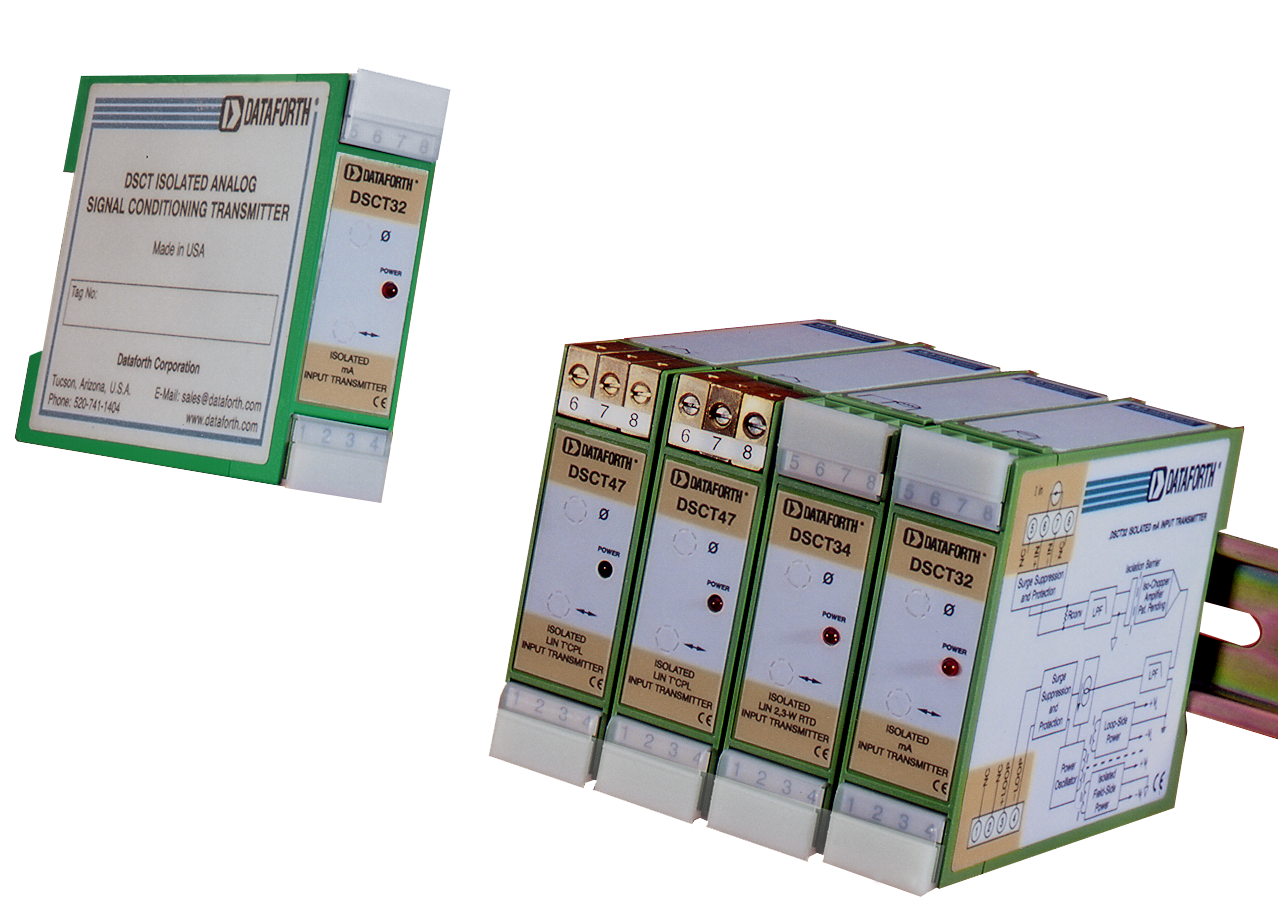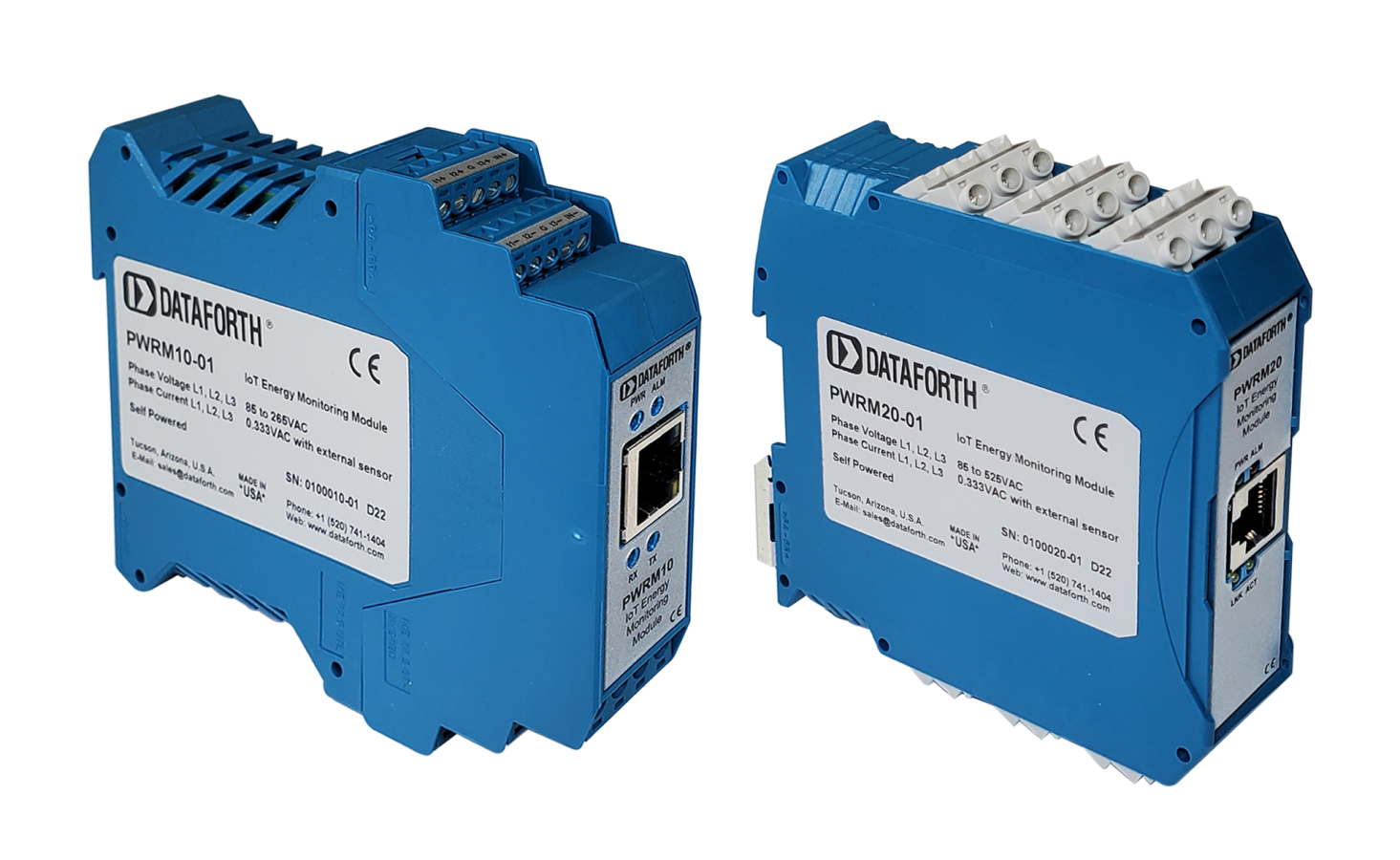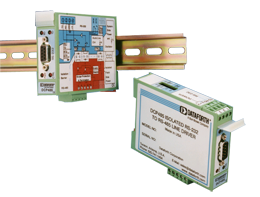Application Notes Library
Dataforth's library of application notes.
Browse our application note library on this page. We hope you find the presented information helpful. If you like to read about a topic which we don't cover yet, please let us know. Send an email with your suggestion to sales@dataforth.com. We look forward to hearing from you!
an102: IC Op Amp Errors, What Are They And How Bad Can They Be
Instrumentation Engineers should be aware of IC Op Amp errors and their impact on specific application topologies.
AN103: Common Mode Voltage
This application note discusses the internal origin of IC differential amplifier common mode gain (Acm) and some of the external applications that create common mode voltages.
an104: 4-20 mA Transmitters
Over the years the 4-20 mA transmitter has become an accepted standard technique for transmitting information between field I/O and the control area.
an107: Practical Thermocouple Temperature Measurements
The theory of thermocouple behavior is discussed in this application note.
an108: When Good Grounds Go Bad
Unwanted ground currents (Ig) often exist creating undesirable Ig*Zg voltage drops.
an109: Single Phase AC Measurements Revisited
This application note reviews practical single-phase current calculations using phasors and "name-plate" data.
an110: 3-Phase AC Calculations Revisited
This application note is a continuation of Dataforth's <a href="catalog/pdf/an109.pdf" target="_blank">Application Note AN109</a>, which contains AC system definitions and basic rules for calculations with examples.
an111: Current Modules Measure Power Factor
The "power factor" of AC systems is the cosine of the angle by which the AC current leads or lags the applied AC excitation voltage.
an112: Filtering in Signal Conditioning Modules, SCMs
The objective of this application note is a brief review of filter fundamentals primarily focused on the amplitude response of low-pass (LP) filters needed in industrial signal conditioning modules.
an113: Phase Angles and Time Delays
A brief visual examination of typical SCM low-pass (LP) filter pulse and phase characteristics.
an114: Accuracy versus Resolution
In the process of analyzing system accuracy needs, the topic of resolution requires attention as it relates to overall accuracy.
AN115: Sampling Law
Answers to the sampling rate question in data acquisition and control systems when isolating analog signals.
an117: Basic Bridge Circuits
This application note will focus primarily on some subtleties of bridge circuit excitation and associated performance.
an118: Strain Gage Signal Conditioner
The behavior fundamentals of strain gages interfaced to Dataforth’s strain gage signal conditioners will be examined. The effects of line resistance, strain gage parameter tolerances, and methods of excitation are included.
an119: Six Sigma: What? Why? How?
Product variation and defects undercut customer loyalty as well as company profits. Six Sigma is a rigorous, disciplined, data-driven methodology that was developed to enhance product quality and company profitability by improving manufacturing and business processes.
an120: Wind Turbines Today
The wind turbine controller plays many roles and is at the heart of wind turbine safety and operability. Sensors are used to measure as many as 500 parameters in a modern wind turbine.
an121: Low Pass Filter Rise Time vs Bandwidth
This application note examines the low pass (LP) filter topology attributes that are common to both the leading edge rise time response to an input step voltage and the amplitude frequency response.
an122: Introduction to PID Control
PID controllers are used in most automatic process control applications in industry. This Application Note reviews the design of PID controllers and explains the P, I, and D control modes used in them.
an123: Tuning Control Loops for Fast Response
With a slight modification of the Cohen-Coon tuning rules, control loops can still respond quickly, but they are much less prone to oscillations. This Application Note describes this modified Cohen- Coon tuning method.
an124: Tuning Control Loops with the IMC Tuning Method
This Application Note describes how to tune control loops using the Internal Model Control (IMC) tuning method, sometimes called Lambda tuning.
an125: Tuning Level Control Loops
This Application Note describes how to tune level control loops using a slight modification of the Ziegler-Nichols tuning method which improves the loop stability.
an126: Tuning Surge Tank Level Control Loops
The level-averaging method, preferred by most experts, minimizes control valve movement during disturbances, keeps the level between its limits, and brings the level back to set point in the long term.
an127: Op-Amp Errors, Another View
This note is only concerned with Op-Amps and its purpose is to show how final equations of some basic errors are derived from first circuit principles - primarily node analysis.
an129: Harmonics and Utility Costs
The objective of this Application Note is to briefly show how these types of harmonics in a customer’s facility affect utility-measured quantities and costs.
an201: SCM9B/LDM422/485 RS-485 Connection
This Application Note is a block diagram describing the SCM9B/LDM422/485 RS-485 Connection.
an202: LDM485 to LDM485 to Other RS-485 Devices Configuration
This application note provides general notes on termination and block diagram describing various types of LDM485 to LDM485 to Other RS-485 Devices. Point-to-point, Multidrop, half and full duplex, and -2 and -4 wire configurations are addressed.
an501: Thermocouple Voltage-To-Temperature Conversion Method
The measured output voltage of the SCM5B37 thermocouple module must often be converted back to temperature. This is readily done with the SCM5B37 series because cold junction compensation is incorporated into the module and the SCMPB backpanels.
an502: SCM5B Ground Connections and Host System Interfaces
Use of the ground jumper arrangement on the SCMPB01 and SCMPB02 backpanels depends on the particular host analog-to-digital converter (ADC) system connected to the backpanels and SCM5B modules. This application note details four common system interface schemes.
AN503: SCM5B Failure Rate Calculation and Prediction
This application notes addresses failure rate calculations for the SCM5B series modules
an504: Interpreting Drift Specifications
This application note addresses drift specifications and shows how to calculate Offset Drift, Gain Drift, and Total Drift.
an505: Hardware Linearization of Non-Linear Signals
Many sensors used in industry exhibit a deviation from an ideal (linear) relationship between input and output. Several of the SCM5B series modules have the capability of creating a non-linear transfer function through the module itself.
an506: ANSI/IEEE C37.90.1-1989 Transient Specification
Industrial equipment located in the “field” is exposed to electrical noise, power surges, and transient events such as static discharge or lightning strikes. All Dataforth products are designed with the field inputs or field outputs protected against transient events.
an507: Shield Grounding
Cable shielding is used primarily to minimize or eliminate capacitively coupled interference from electric fields. When properly implemented, it can also be used to minimize inductive coupling from magnetic fields. Shielding is only effective against electric fields if it provides a low impedance path to ground.
an508: Protecting Signal Lines Against EMI
Electrical plant/process equipment often interact to create “noise” or electromagnetic interference (EMI) problems which can degrade critical measurement and control signals. Proper grounding and shielding techniques can help reduce or eliminate these problems and maintain signal integrity.
an509: SCM5B43 - DC LVDT Input Module
The Dataforth SCM5B43 was designed to interface directly to DC LVDTs; providing the required DC excitation, filtering, isolation, and output scaling to the user’s A/D equipment. The SCM5B43 1kHz bandwidth reduces ripple and noise which is inherent in these devices.
an701: SCM7B Thermocouple Modules and CJC
When SCM7B37 thermocouple modules are used to measure temperature, the measured output voltage must often be converted back to temperature. This is readily done with the SCM7B37 series because Cold Junction Compensation (CJC) is incorporated into the module and SCM7B backpanels.
an702: SCM7B Frequency and Time Response
The results of performing a 100-run Monte Carlo analysis on the SCM7B filter circuitry in both the frequency and time domains are presented.
an704: Failure Rate Calculation and Prediction
Failure rate calculations for the SCM7B modules are derived from 1.) the MIL- HDBK-217 (Reliability Prediction of Electronic Equipment), and 2.) Demonstrated Performance.
an801: DSCA Calibration Procedure
This application note describes the DSCA calibration procedure.
an802: DSCA, SCM5B, SCM7B and 8B Failure Rate Calculation and Prediction
Failure rate calculations for the DSCA, SCM5B, SCM7B, and 8B modules are derived from MIL-
Cross Point Switch using MAQ20-DORLY20 Module
The MAQ20 relay module, MAQ20-DORLY20, contains 20 relays that may be wired as a 4x5 cross point switch and find valuable use in many applications.
MAQ20 PID Control in a Home Heating Application
In this application, a MAQ20 Data Acquisition and Control System along with DSCA Signal Conditioning Modules, standard sensors, and actuators control the combustion process of a batch fed cordwood boiler to optimum efficiency throughout a burn cycle by means of a draft inducer blower and modulation of primary and secondary air dampers.
Measuring RMS Values of Voltage and Current (AN101)
True RMS measurements require instrumentation devices that accurately implement the RMS equation.
RMS Revisited (AN128)
This Application Note will revisit the definition of RMS, show RMS values for various time functions, and explore some interesting RMS measurement issues.
Why Use Isolated Signal Conditioners?
Isolating power sources and sensor signals is the most effective method for eliminating undesirable ground loop currents and induced electrical noise.


